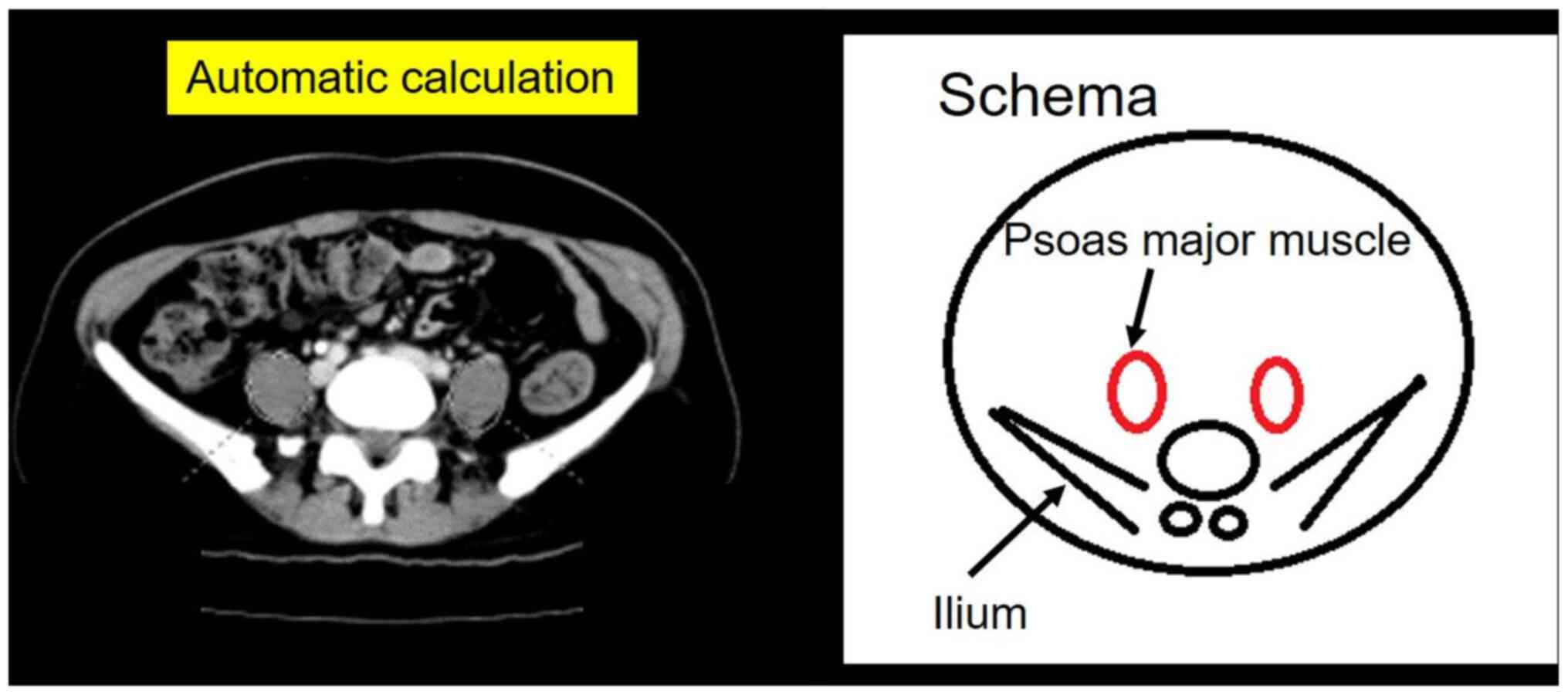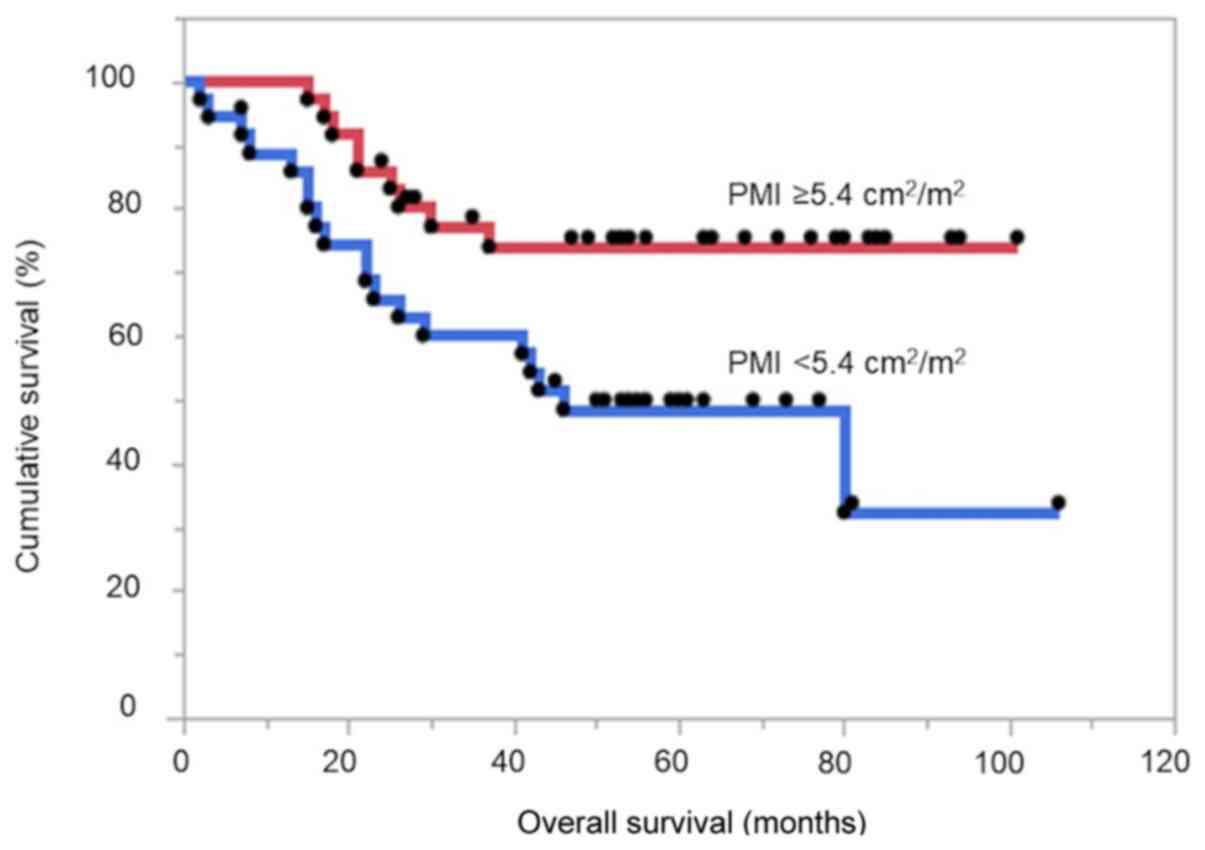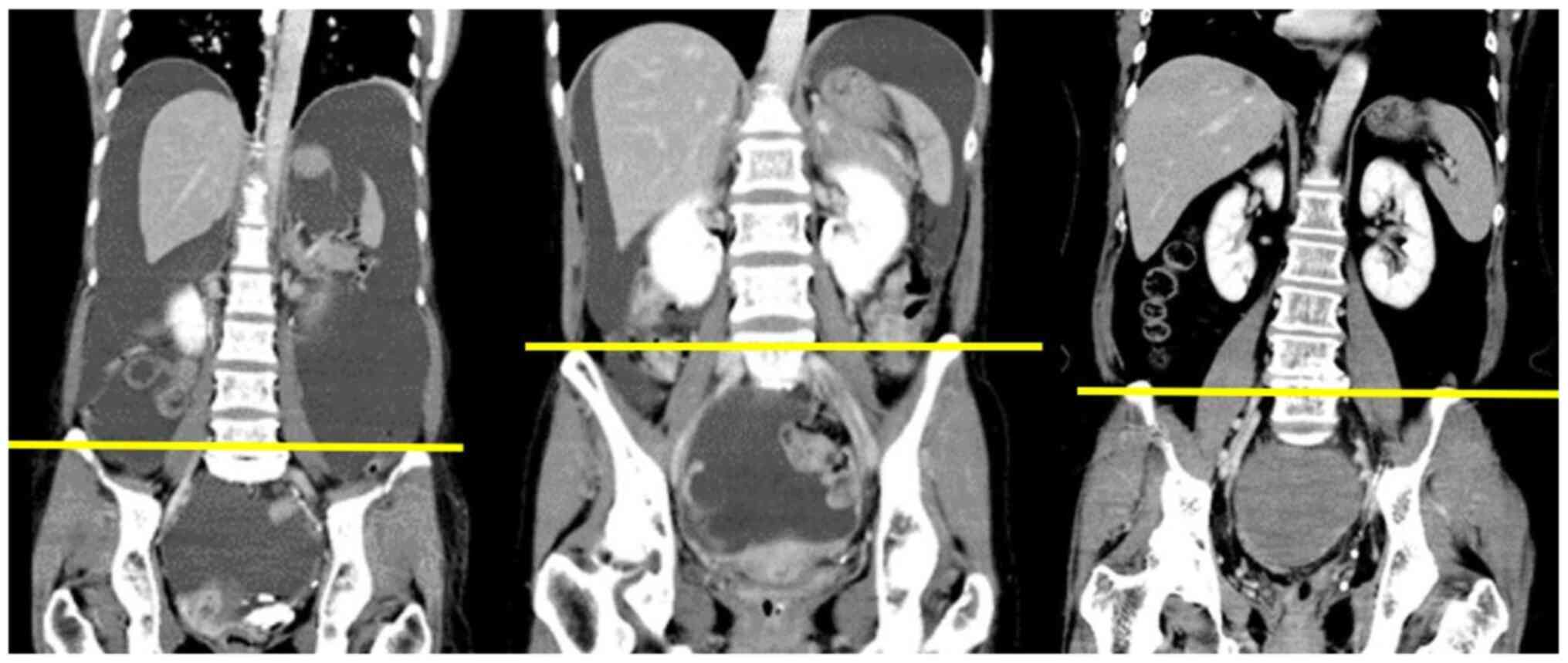|
1
|
Evans WJ and Campbell WW: Sarcopenia and
age-related changes in body composition and functional capacity. J
Nutr. 123 (Suppl 2):S465–S468. 1993.PubMed/NCBI View Article : Google Scholar
|
|
2
|
Ryan AM, Power DG, Daly L, Cushen SJ, Ní
Bhuachalla Ē and Prado CM: Cancer-associated malnutrition, cachexia
and sarcopenia: The skeleton in the hospital closet 40 years later.
Proc Nutr Soc. 75:199–211. 2016.PubMed/NCBI View Article : Google Scholar
|
|
3
|
Baumgartner RN, Koehler KM, Gallagher D,
Romero L, Heymsfield SB, Ross RR, Garry PJ and Lindeman RD:
Epidemiology of sarcopenia among the elderly in New Mexico. Am J
Epidemiol. 147:755–763. 1998.PubMed/NCBI View Article : Google Scholar
|
|
4
|
Shachar SS, Williams GR, Muss HB and
Nishijima TF: Prognostic value of sarcopenia in adults with solid
tumours: A meta-analysis and systematic review. Eur J Cancer.
57:58–67. 2016.PubMed/NCBI View Article : Google Scholar
|
|
5
|
Fearon K, Strasser F, Anker SD, Bosaeus I,
Bruera E, Fainsinger RL, Jatoi A, Loprinzi C, MacDonald N,
Mantovani G, et al: Definition and classification of cancer
cachexia: An international consensus. Lancet Oncol. 12:489–495.
2011.PubMed/NCBI View Article : Google Scholar
|
|
6
|
Solheim TS, Fayers PM, Fladvad T, Tan B,
Skorpen F, Fearon K, Baracos VE, Klepstad P, Strasser F and Kaasa
S: European Palliative Care Research Collaborative (EPCRC) and the
European Pharmacogenetic Study (EPOS). Is there a genetic cause of
appetite loss?-an explorative study in 1,853 cancer patients. J
Cachexia Sarcopenia Muscle. 3:191–198. 2012.PubMed/NCBI View Article : Google Scholar
|
|
7
|
Feliciano EM, Kroenke CH, Meyerhardt JA,
Prado CM, Bradshaw PT, Kwan ML, Xiao J, Alexeeff S, Corley D,
Weltzien E, et al: Association of systemic inflammation and
sarcopenia with survival in nonmetastatic colorectal cancer:
Results from the C SCANS study. JAMA Oncol.
3(e172319)2017.PubMed/NCBI View Article : Google Scholar
|
|
8
|
Rutten IJ, van Dijk DP, Kruitwagen RF,
Beets-Tan RG, Olde Damink SW and van Gorp T: Loss of skeletal
muscle during neoadjuvant chemotherapy is related to decreased
survival in ovarian cancer patients. J Cachexia Sarcopenia Muscle.
7:458–466. 2016.PubMed/NCBI View Article : Google Scholar
|
|
9
|
Kumar A, Moynagh MR, Multinu F, Cliby WA,
McGree ME, Weaver AL, Young PM, Bakkum-Gamez JN, Langstraat CL,
Dowdy SC, et al: Muscle composition measured by CT scan is a
measurable predictor of overall survival in advanced ovarian
cancer. Gynecol Oncol. 142:311–316. 2016.PubMed/NCBI View Article : Google Scholar
|
|
10
|
Rutten IJ, Ubachs J, Kruitwagen RF,
Beets-Tan RG, Olde Damink SW and Van Gorp T: Psoas muscle area is
not representative of total skeletal muscle area in the assessment
of sarcopenia in ovarian cancer. J Cachexia Sarcopenia Muscle.
8:630–638. 2017.PubMed/NCBI View Article : Google Scholar
|
|
11
|
Yoshikawa T, Takano M, Miyamoto M, Yajima
I, Shimizu Y, Aizawa Y, Suguchi Y, Moriiwa M, Aoyama T, Soyama H,
et al: Psoas muscle volume as a predictor of peripheral
neurotoxicity induced by primary chemotherapy in ovarian cancers.
Cancer Chemother Pharmacol. 80:555–561. 2017.PubMed/NCBI View Article : Google Scholar
|
|
12
|
Javadi S, Ganeshan DM, Qayyum A, Iyer RB
and Bhosale P: Ovarian cancer, the revised FIGO staging system, and
the role of imaging. AJR Am J Roentgenol. 206:1351–1360.
2016.PubMed/NCBI View Article : Google Scholar
|
|
13
|
Conrad LB, Awdeh H, Acosta-Torres S,
Conrad SA, Bailey AA, Miller DS and Lea JS: Pre-operative core
muscle index in combination with hypoalbuminemia is associated with
poor prognosis in advanced ovarian cancer. J Surg Oncol.
117:1020–1028. 2018.PubMed/NCBI View Article : Google Scholar
|
|
14
|
Baracos VE: Psoas as a sentinel muscle for
sarcopenia: A flawed premise. J Cachexia Sarcopenia Muscle.
8:527–528. 2017.PubMed/NCBI View Article : Google Scholar
|
|
15
|
Ubachs J, Ziemons J, Minis-Rutten IJ,
Kruitwagen RF, Kleijnen J, Lambrechts S, Olde Damink SW, Rensen SS
and Van Gorp T: Sarcopenia and ovarian cancer survival: A
systematic review and meta-analysis. J Cachexia Sarcopenia Muscle.
10:1165–1174. 2019.PubMed/NCBI View Article : Google Scholar
|
|
16
|
Staley SA, Tucker K, Newton M, Ertel M,
Oldan J, Doherty I, West L, Zhang Y and Gehrig PA: Sarcopenia as a
predictor of survival and chemotoxicity in patients with epithelial
ovarian cancer receiving platinum and taxane-based chemotherapy.
Gynecol Oncol. 156:695–700. 2020.PubMed/NCBI View Article : Google Scholar
|
|
17
|
Kim SI, Kim TM, Lee M, Kim HS, Chung HH,
Cho JY and Song YS: Impact of CT-determined sarcopenia and body
composition on survival outcome in patients with advanced-stage
high-grade serous ovarian carcinoma. Cancers (Basel).
12(559)2020.PubMed/NCBI View Article : Google Scholar
|
|
18
|
Huang CY, Yang YC, Chen TC, Chen JR, Chen
YJ, Wu MH, Jan YT, Chang CL and Lee J: Muscle loss during primary
debulking surgery and chemotherapy predicts poor survival in
advanced-stage ovarian cancer. J Cachexia Sarcopenia Muscle.
11:534–546. 2020.PubMed/NCBI View Article : Google Scholar
|
|
19
|
Mintziras I, Miligkos M, Wächter S,
Manoharan J, Maurer E and Bartsch DK: Sarcopenia and sarcopenic
obesity are significantly associated with poorer overall survival
in patients with pancreatic cancer: Systematic review and
meta-analysis. Int J Surg. 59:19–26. 2018.PubMed/NCBI View Article : Google Scholar
|
|
20
|
Dutra MT, Avelar BP, Souza VC, Bottaro M,
Oliveira RJ, Nóbrega OT and Moreno Lima R: Relationship between
sarcopenic obesity-related phenotypes and inflammatory markers in
postmenopausal women. Clin Physiol Funct Imaging. 37:205–210.
2017.PubMed/NCBI View Article : Google Scholar
|
|
21
|
Iyengar NM, Gucalp A, Dannenberg AJ and
Hudis CA: Obesity and cancer mechanisms: Tumor microenvironment and
inflammation. J Clin Oncol. 34:4270–4276. 2016.PubMed/NCBI View Article : Google Scholar
|

















